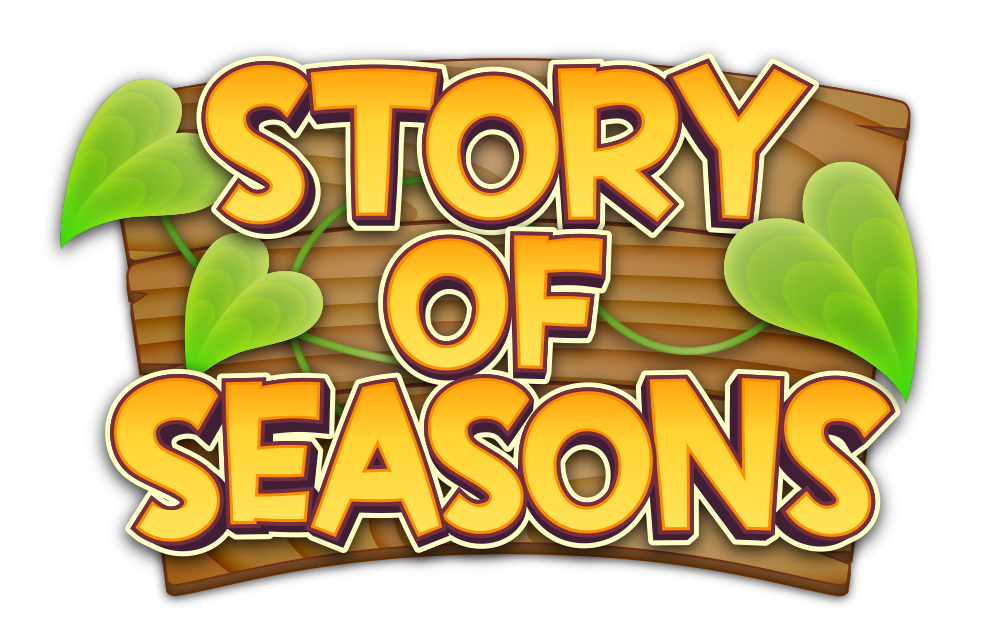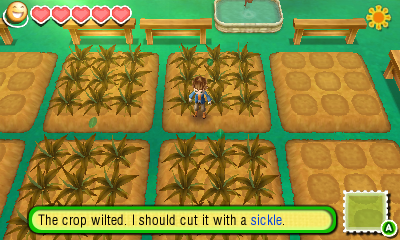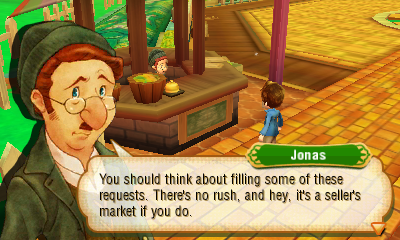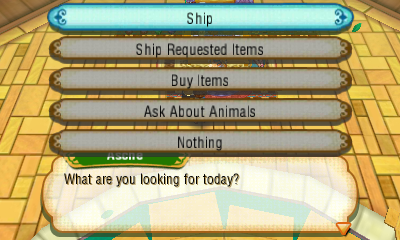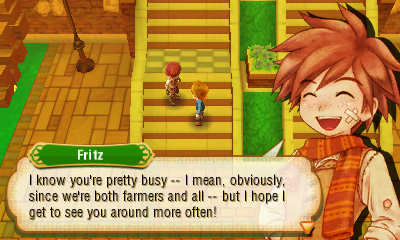Ever since the days of the Super Nintendo, Harvest Moon has been a staple of gaming with its numerous releases centered around farming. In a series now twenty-five entries long (not counting the various spinoffs such as Rune Factory or Hometown Story), the series is returning back to nature and rediscovering its roots. In Japan, the series has always been known as Bokujou Monogatari, translated as Farm Story. Now, the long-running farming series has rebranded itself with its latest release, Story of Seasons. Can Story of Seasons prove that menial labor can still be fun, or is this one not quite ready to be harvested?
Story of Seasons opens with the main character, whether it’s a boy or girl, filling out an application for a change of lifestyle and opting to becoming a farmer. It isn’t long after that you’re accepted and given the opportunity to move to Oak Tree Town and given a chance to start a life anew as a farmer. The game offers a difficulty choice at the beginning of starting a new game new to the North American localization. If you’re wanting to just take it easy and enjoy the world, the new Seedling Mode might be what you’re looking for. It offers a cost reduction on bought goods, increases the number of seeds available to purchase, and a reduction in stamina when tending your fields and livestock.
For newcomers and series veterans alike, the first week spent on the farm in Oak Tree Town is spent learning the ropes and basics of farming. Preparing the fields, sowing seeds, harvesting crops, and even taking care of a cow are all taught to you before you can start your new life, preventing players from just being thrown in blind. That’s right, you get to start the game off with a complimentary cow rather than having to build the barn and spend thousands of G of your own money.
Story of Seasons starts off somewhat slow, giving you only a few number of crops to tend to in the springtime including peach trees that once planted in spring and take a month to mature, provide fruit on a regular basis during the summertime. As you progress into later months in Oak Tree, a plethora of new options open up to the player. Livestock has always been a big part of the Harvest Moon games and Story of Seasons has plenty of different animals to tend to if you want to build your farm in that way. Specialized lands dot the countryside where you can focus on growing tea or other exotic crops rather than just your standard farm fare. Prefer fishing to real farm work? Why not build a fish hatchery and expand your industry that way. There’s a surprising amount of customization and various ways to amass your fortune that don’t require just swinging a hoe all day long.
If you’re looking to work the fields as a farmer, Story of Seasons has a great deal of customization to the sorts of crops you can maintain. Each season lasts a mere 30 days, and after that, any plants left behind wilt away and die (with the exception of certain crops, like the peach tree from spring into summer). Cultivating new seeds can help create higher quality strains of a particular crop, fetching higher sell prices or a better shot at that first place price at the various harvest festivals happening in town. Special Nintendo-themed crops are a big rarity in the game, but they can be a huge boon to your farm if you can catch the right merchant at the trade depot. The Super Mushroom feels almost game-breaking when you get it, as it can instantly boost the growth levels of your crops by two levels. Crops such as trees have a few phases between seedling and mature tree, so letting them grow a short while before harvesting a super mushroom can result in an instantly mature tree. If you’ve got a high-yielding crop such as a pineapple, harvest what you can first before grabbing your super mushroom since that can instantly yield a second crop of pineapples and a fair share of extra gold.
In Story of Seasons, there’s a strong sense of community with everything you have to do. Multiplayer features allow people to visit another player’s farm and exchange items or even grow crops together, although I was not able to find another reviewed to play with to test this functionality out prior to release. Instead of just shipping your crops away to a plain wooden box, you’ll have to interact with various merchants from the surrounding countries. Early on, there’s only one traveling merchant visiting that may prefer one type of crop, such as fish or eggs, at a high price but they’re not the only trade partner you can come across. As Oak Tree Town becomes more prosperous and well known around the world, envoys from other countries may want to trade with you and hawk their wares. At first, I didn’t enjoy the fact that I could only sell my crops on certain days of the week, especially when I needed money just to grab a new blueprint or bite to eat at the local restaurant, but it soon became part of my regular routine to harvest a set of crops and get my week’s work out of the way just in time for the next traveling merchant to stop by.
Self-reliance is another strong tenet of Story of Seasons. While the sense of community is even stronger with having to work together to make Oak Tree Town a better place, sometimes you’ve gotta take care of things yourself. Upgrades to your farm and farming equipment are all done by the player themselves. Blueprints and recipes, handed out by various citizens in trade or barter, are how you get the majority of the upgrades to your farm. Want a television for your farm? You better go out and get the glass and lumber and build it yourself. There’s a better sense of satisfaction when you can see your farm grow and prosper from your own two hands instead of just paying the town blacksmith a considerable sum of G to do the work for you like in previous games.
If I had one gripe about my playtime with Story of Seasons, it’s having to worry about stamina. Early on, you’re having to fight with a fairly low stamina pool and too many tasks to get accomplished. Every little task you do such as plowing your fields, breaking rocks with a hammer, watering crops, et cetera all take away at a small stamina pool. Eating your crops or a dish made from them is an easy boost to at least get a little more pep in your step. As the seasons pass, more and more options open up to help the player working harder for longer including a casual dip in the hot springs. Upgrading tools can reduce stamina drain as well as boost their efficiency, so that’s an important step whenever you can spare the lumber and other raw materials.
Story of Seasons can best be described in one word: comfy. Even when I was wrestling with trying to balance the daily workload with my character’s stamina, I didn’t feel overburdened or stressed out. Tending to my farm and chatting up the local villagers became a zen-like routine as I watched the days ingame fly by. This is a game where I could pick it up for a short amount of time and feel like I accomplished just as much as if I sat down for a multiple hour session. Story of Seasons is a true return back to the spirit of farming and certainly is a comfy title if you just want to kick back and unwind with your own virtual farm.
[Editor’s Note: Story of Seasons was reviewed on the Nintendo 3DS. Review code was provided to us by the publisher.]

